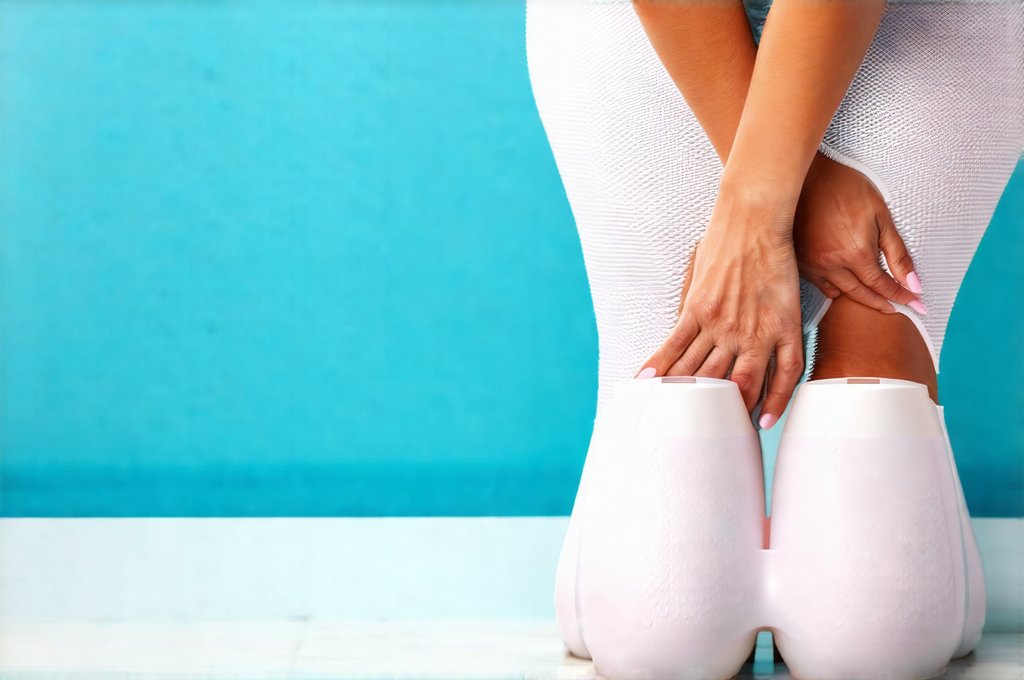The bladder is often an overlooked component of overall feminine wellness, yet its proper function significantly impacts quality of life. Many women unknowingly adopt personal care habits that, over time, can contribute to urinary tract irritation, increased frequency, urgency, and even more serious conditions like interstitial cystitis (painful bladder syndrome). Understanding how everyday choices – from hygiene routines to clothing selections – affect bladder health is a crucial step towards proactive self-care. This isn’t about restrictive limitations; it’s about informed decisions that allow you to maintain comfort, confidence, and control.
This article will explore the often-hidden connections between personal care habits and bladder health, offering practical guidance for women seeking to minimize irritation and support long-term urinary well-being. It focuses on empowering individuals with knowledge so they can make choices aligned with their bodies’ needs, fostering a sense of ownership over their overall health. We’ll delve into specific products, practices, and lifestyle adjustments that can contribute to a happier, healthier bladder – without sacrificing self-care or personal preferences.
Understanding the Bladder & Irritation Factors
The bladder is a remarkable organ designed to store urine until it’s convenient to empty it. Its inner lining, called the urothelium, acts as a protective barrier against waste products and potential irritants. However, this barrier isn’t invincible. Certain substances and practices can compromise its integrity, leading to inflammation and discomfort. Bladder irritation isn’t always caused by infection; it can be triggered by chemical sensitivities, pH imbalances, or even physical pressure. Recognizing these factors is the first step toward preventing problems.
Common culprits include harsh soaps, fragranced feminine hygiene products, bubble baths, certain fabrics, and even dietary choices (though diet is beyond the scope of this article). The goal isn’t to eliminate all potential irritants, which is unrealistic, but rather to minimize exposure to those within our control. Sensitivity levels vary greatly from person to person; what bothers one woman might not affect another. Pay attention to your body’s signals – increased frequency, burning sensations, or urgency are all indicators that something isn’t right.
It’s also important to understand the role of the pelvic floor muscles. These muscles support the bladder and other pelvic organs. Weakened pelvic floor muscles can contribute to urinary leakage and a sense of incomplete emptying, exacerbating bladder discomfort. Incorporating targeted exercises (like Kegels) can strengthen these muscles and improve overall bladder control. If you are concerned about frequent UTIs, it may be wise to should you see a doctor for every UTI to rule out underlying issues.
Choosing Bladder-Friendly Personal Care Products
Many conventional personal care products contain ingredients that can irritate the bladder. Fragrances are notorious offenders, as they often comprise complex mixtures of chemicals that can disrupt the delicate balance of the urothelium. Sodium lauryl sulfate (SLS) and sodium laureth sulfate (SLES), commonly found in soaps, shampoos, and body washes, are also known irritants. Even seemingly innocuous ingredients like dyes and preservatives can contribute to sensitivity.
When selecting personal care products, prioritize those labeled “fragrance-free,” “dye-free,” and “hypoallergenic.” Read ingredient lists carefully, even on products marketed as natural or organic – greenwashing is common. Look for gentle cleansers formulated specifically for sensitive skin. For feminine hygiene, avoid douches, sprays, and scented wipes; water is often the best cleanser. Consider switching to unscented laundry detergents and fabric softeners, as residue from these products can come into contact with the perineal area and cause irritation.
Choosing cotton underwear is also crucial, as synthetic fabrics can trap moisture and promote bacterial growth. Avoid tight-fitting clothing that puts pressure on the bladder. Remember that “sensitive skin” isn’t a requirement for needing to be mindful of ingredients – even those without diagnosed sensitivities can benefit from switching to more gentle formulations. If you suspect wiping habits may contribute to your issues, consider should women change wiping habits for UTIs.
Minimizing Perineal Irritation
The perineum (the area between the vagina and anus) is particularly vulnerable to irritation due to its delicate skin and proximity to the bladder and urethra. Harsh soaps, scented wipes, and aggressive scrubbing can disrupt the natural pH balance of this area, increasing susceptibility to infection and discomfort.
- Gentle Cleansing: Use lukewarm water and a mild, fragrance-free cleanser specifically designed for sensitive skin. Avoid vigorous rubbing or scrubbing.
- Proper Wiping Technique: Always wipe from front to back after using the toilet to prevent bacteria from spreading from the anal area to the urethra.
- Avoid Douching: Douching disrupts the natural flora of the vagina, increasing the risk of infection and irritation. The vagina is self-cleaning and doesn’t require douching.
- Consider a Bidet: A bidet provides gentle cleansing with water, minimizing friction and reducing the need for harsh soaps.
Optimizing Bathroom Habits
How we use the bathroom can also impact bladder health. Holding urine for extended periods puts excessive strain on the bladder muscles, potentially weakening them over time. Conversely, frequent urination – even when not necessary – can create a habit that leads to urgency and discomfort.
- Regular Voiding: Aim to empty your bladder every 2-3 hours, regardless of whether you feel the urge.
- Double Voiding: After urinating, wait a few moments and then try to void again to ensure complete emptying. This helps prevent residual urine from accumulating in the bladder.
- Relaxed Urination: Take your time when urinating and avoid straining. Straining can weaken pelvic floor muscles and contribute to urinary retention.
- Avoid “Just In Case” Urinations: Only urinate when you genuinely feel the urge, rather than preemptively emptying your bladder out of habit.
Strengthening Your Pelvic Floor Muscles
A strong pelvic floor is essential for optimal bladder control and function. Kegel exercises are a simple yet effective way to strengthen these muscles. They can be performed discreetly anywhere, anytime.
- Identify the Correct Muscles: Imagine you’re trying to stop the flow of urine midstream – those are the muscles you need to engage.
- Proper Technique: Squeeze the pelvic floor muscles for 3-5 seconds, then relax for 3-5 seconds. Repeat this exercise 10-15 times, several times a day.
- Consistency is Key: Regular practice is crucial for seeing results. Incorporate Kegel exercises into your daily routine.
- Seek Professional Guidance: If you’re unsure about proper technique or experiencing difficulties, consult with a pelvic floor physical therapist. They can provide personalized guidance and ensure you’re performing the exercises correctly. Understanding bladder pain syndromes every woman should know can also help identify potential underlying issues.
It’s important to remember that bladder health is an ongoing journey – not a destination. By adopting these simple yet effective habits, women can proactively support their urinary well-being and enjoy a greater sense of comfort, confidence, and control. If you experience persistent or severe symptoms, always consult with a healthcare professional for proper diagnosis and treatment.





















